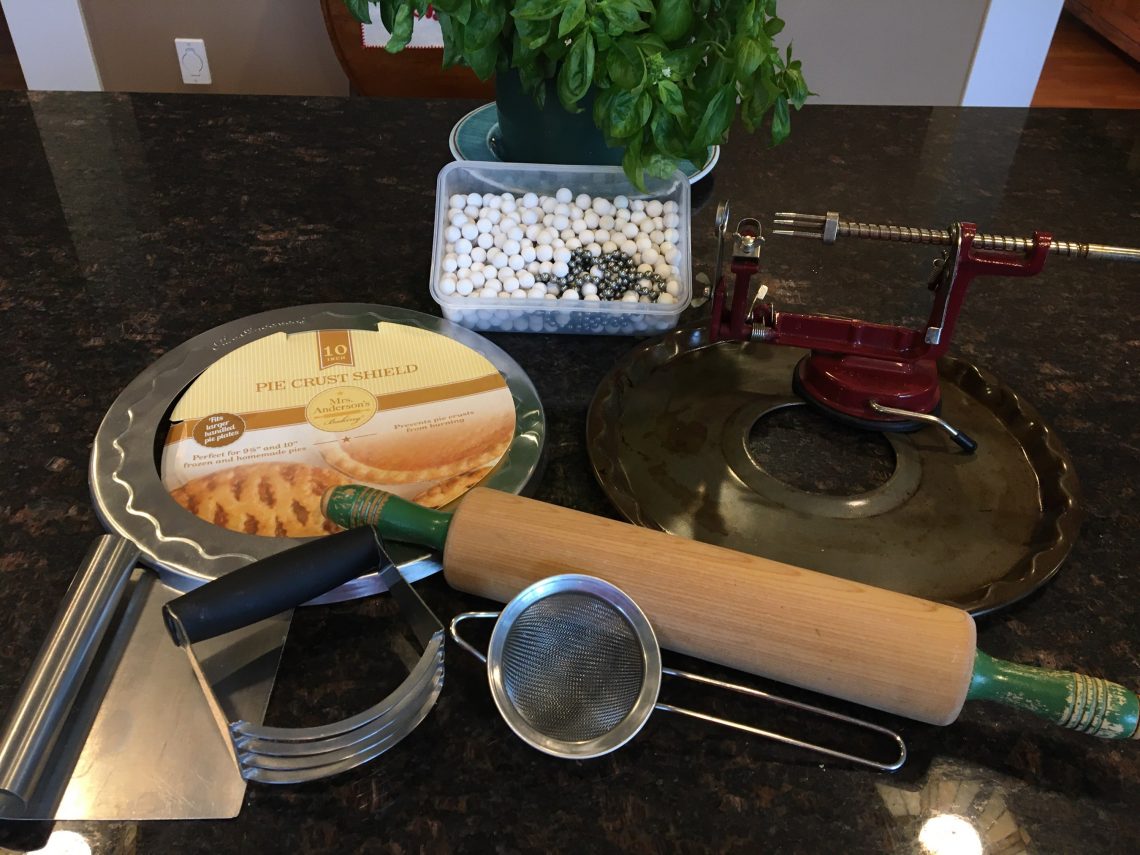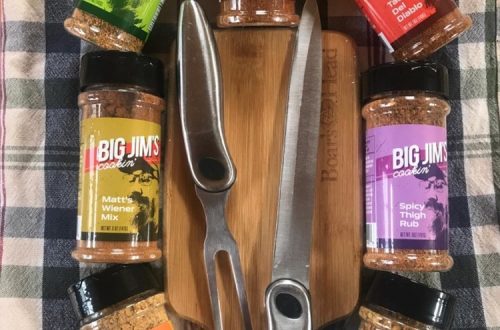
The Pie’s the Thing
Pies have always been my favorite dessert. But even though I grew up watching my mother and grandmother make pies, I don’t think I have the skills necessary to make a great pie. It’s all in the crust. However, I do know a terrific pâtissier.
Sabrina Babcock has a reputation within her circle of friends for her fine touch. At our church auctions, bidding was perennially high for Sabrina’s donation of seasonal pies. Sabrina was generous enough to chat with me about pie-dom and not only share some of her techniques on pastry and pie technique, but to also offer a few of her favorite recipes.
The art
Sabrina attributes her flaky crust to “really good butter and not squishing it too much.” To keep it cold, she uses ice water, half and half, and a little bit of salt. She also makes sure to let the dough rest in the refrigerator, then rolls it out. She says it’s important to roll from the center out; don’t roll back and forth.
Sabrina also has a pantry full of essential tools (pictured above):
- A pie crust shield to place around the edge to keep the fluted edges from burning
- A small strainer for sprinkling flour
- Two sets of ceramic pie weights for pre-baking one-crust pies (you need two because one won’t fill it enough; the weights need to go up the sides)
- A shield to place under a cooking fruit pie so that any juice bubbling over the side doesn’t bake onto the bottom of the oven
- A pastry knife to mix the shortening into the flour
- Her husband’s grandmother’s rolling pin
The science
To find out the secrets of a good crust, I wanted to understand the science of flaky pastry. Chef and author Samin Nosrat says the secret to a mouthwatering pie crust lies in the science of creating pockets of fat between the layers of gluten. Flakiness happens when you limit the flour from forming strands of gluten. Instead, you want the cold pieces of butter as well as the entrapped water to turn into steam and push apart the layers of dough to form flakes.
Achieving success means keeping ingredients cold, making sure the butter remains in distinct chunks. As Sabrina says, don’t squish it too much. And don’t overmix. Finally, Nosrat advises sliding the chilled, assembled pie directly into a preheated oven where the water and butter quickly evaporate to achieve a flaky crust. If the oven isn’t hot enough, the water won’t turn to steam, and the crust won’t set before the filling seeps in.
The fruit
As for filling, Sabrina makes a lot of pumpkin and apple pies – apple for her husband Harold and pumpkin for her son Ben. The apple pie is a mix of Granny Smith and Northern Spies, and she makes use of a peeler, corer, and slicer that cuts into even sizes. As for spices, just a little nutmeg and cinnamon. At Christmas, she cuts slits in the shape of a little Christmas tree into the crust for venting.
She also makes peach pies, but she warns that peaches can make for a soggy crust. To prevent that, she blind bakes the crust and then spreads a little softened cream cheese on the bottom Then, there’s her blueberry glacé pie, which, I’m told by a friend lucky enough to have sampled it, is gastronomic heaven.
With these thorough expert instructions, maybe it’s time for me to try my hand at pie-making. With the holidays coming, why not?
To comment, please click on “Read in Browser” or on the headline to view the blog on the website. You can log in and comment at the end of the blog to share your thoughts and start a discussion.
If you’d like to share the blog, click on the Facebook icon or one of the others. Thanks!




